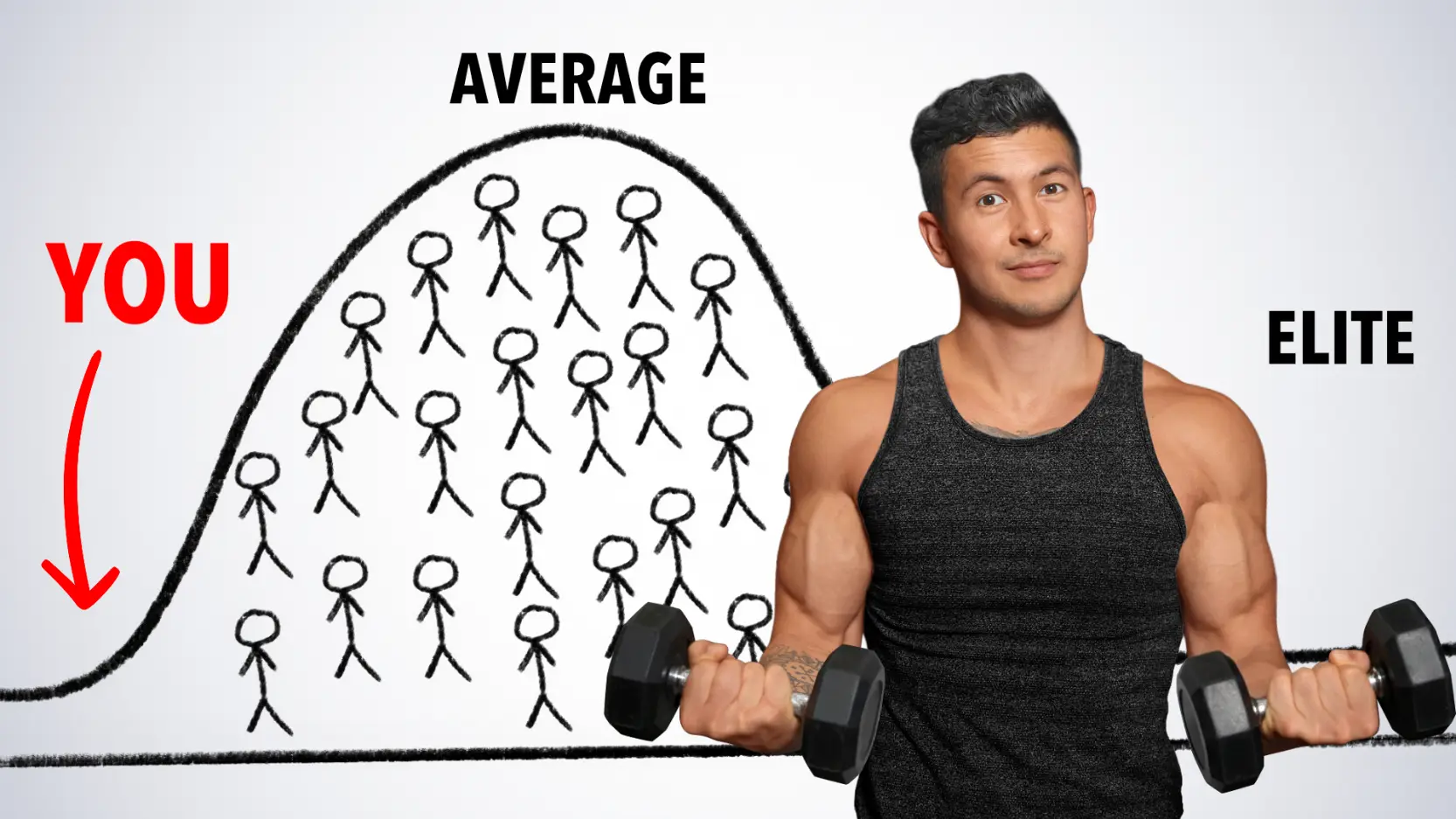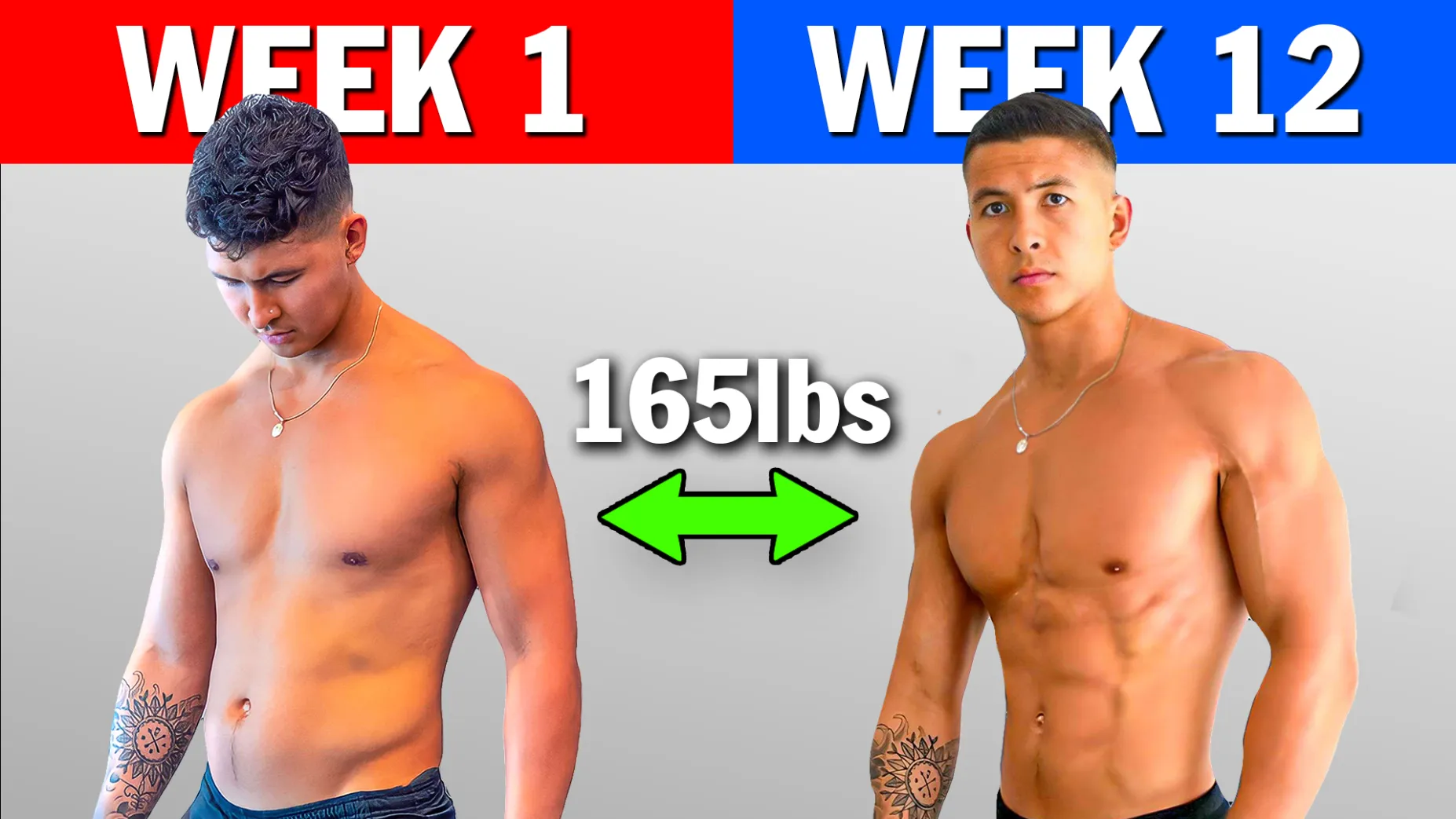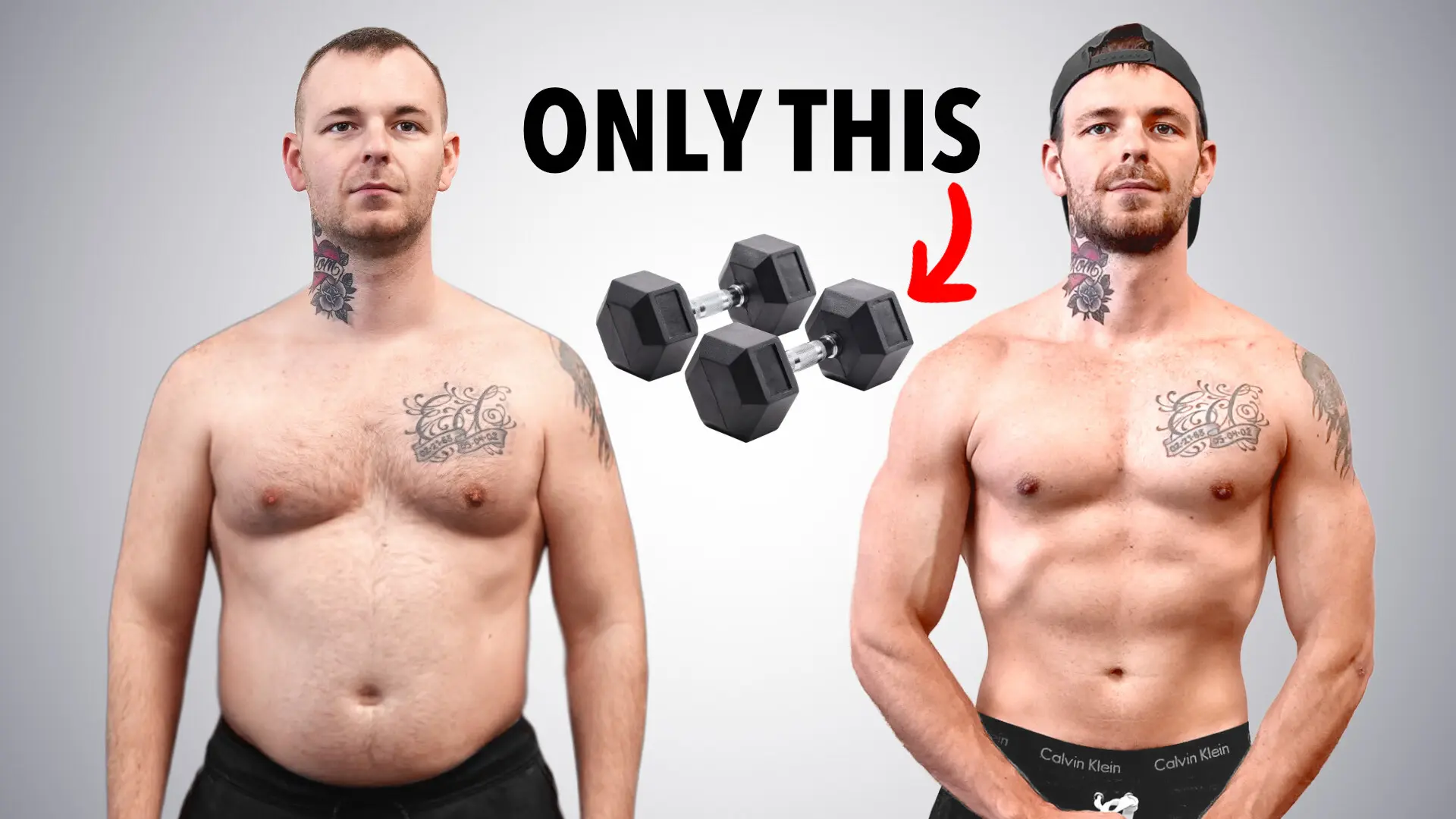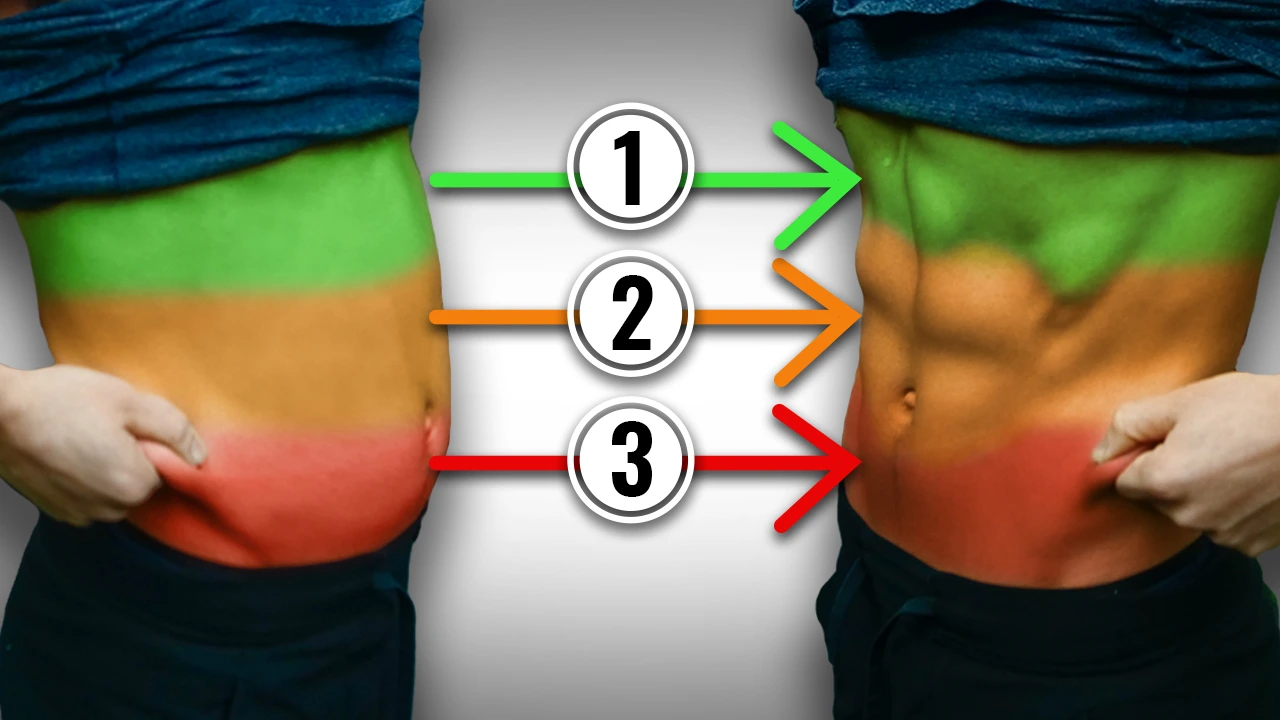
The Ultimate Belly Fat Diet Strategy (Get Shredded In 3 Stages)
Looking for a belly fat diet plan that'll help you get ripped? You're in the right place. Find out how to get rid of your belly fat — for good! — in 3 easy-to-follow stages.
Belly fat is really easy to gain but seems almost impossible to lose. If you've been wondering how to lose belly fat (and fast), you’re probably aware your diet is the key to losing fat in this area.
But you likely have no idea where to start, let alone how to keep fat loss going for long enough to get rid of the most stubborn areas. Today, I’ll show you the ultimate belly fat diet that'll help you get shredded in 3 stages.
More specifically, I'll show you exactly:
- How to eat to start losing fat AND
- How to keep that belly fat diet going till you've successfully lost all your belly fat for good
Before that: if you're looking for a training program that'll help you set up every single one of your workouts for optimal muscle growth, I've got just the thing for you. Every BWS program is designed to be an all-in-one, science-based process that’ll get you to your dream physique FAST. And best of all? It's all rooted in science. For more information:
Click the button below to take my analysis quiz to discover the best program for you:
↓
An Overview Of The Belly Fat Diet Strategy
Before we dive into the 3 stages of the belly fat diet, let me explain what these stages mean and why you need them in the first place.
So you’re likely somewhere between a body fat of 15% and 25%, or maybe even higher.
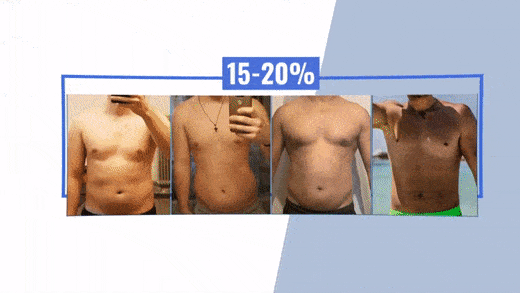
Regardless of where you are, you need to lose enough fat from other areas first before your body will start prioritizing burning off your belly fat for energy. For most people, this starts to really happen around 15% body fat. By the time you reach around 12% or 10% body fat, your belly fat will be almost completely gone.
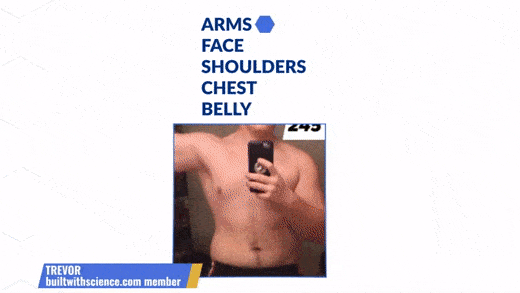
Now while your diet is key to achieving this, the specific "belly fat diet" used to get you from, let’s say, 25% to 15% most often won’t be enough to take you to that next level down to 12%. The same is true for going from 12% to even 10%.
As you get leaner and leaner, there are certain things you need to be aware of and certain changes you should make with your diet to prevent you from getting stuck and to prevent you from losing muscle.
But don't worry. Because in this article, I’ll bring you through the ultimate belly fat diet strategy that'll get you all the way from where you are right now all the way down to 15%, then 12%, and then even 10% if that’s your goal.
And no, in case you were thinking, there's none of that belly fat food burners nonsense. I make sure everything's science-based here!
We’ll do so in 3 stages. Each stage will get progressively more challenging but will also get closer and closer to losing your belly fat. Let’s start with stage 1.
Belly Fat Diet Stage 1 (25%+ → 15% Body Fat)
The first stage of the belly fat diet is designed to kickstart the fat loss process and keep it going until you get to about 15% body fat. Throughout this stage, your hunger levels will be low, your risk of muscle loss will also be low, and physiologically it will be the easiest stage to get through.
This stage is quite simple. There are only two factors you need to focus on. Calories and protein.
Factor 1: Calories — Create An Energy Deficit
Let’s first talk about calories. You don’t need to completely cut out carbs, sugar, or any of your favorite foods during this stage of the belly fat diet.
All you need to do is create what’s known as an “energy deficit” to start forcing your body to burn body fat for energy. You create this deficit by consuming fewer calories than your body burns every day.
To find the appropriate energy deficit for your body, take your body weight in lbs and multiply that by anywhere from 11-13. If you’re a taller individual, younger, or more active, go with the higher end. If you’re a shorter individual, older, or less active, go with the lower end. The number you get will be a rough estimate of the number of calories you should eat every day.
For a more in-depth look at how you could calculate your calorie intake for your belly fat diet, check out this past article:
How Many Calories To Eat Daily To Lose Weight? (GET THIS RIGHT!)
Pick Low-Calorie-Density Foods During This Belly Fat Diet Stage
But to hit your goal calorie intake, some foods are better than others. What I’d recommend is focusing on what’s known as “low-calorie density” foods.
These are foods that, for the amount of space they take up in your stomach, will only add a relatively low amount of calories to your daily total.
For example, look at the picture below to see what 200 calories of Oreos look like and what 200 calories of cereal look like. For the same amount of calories, you could fill your stomach with a mountain full of strawberries and carrots.
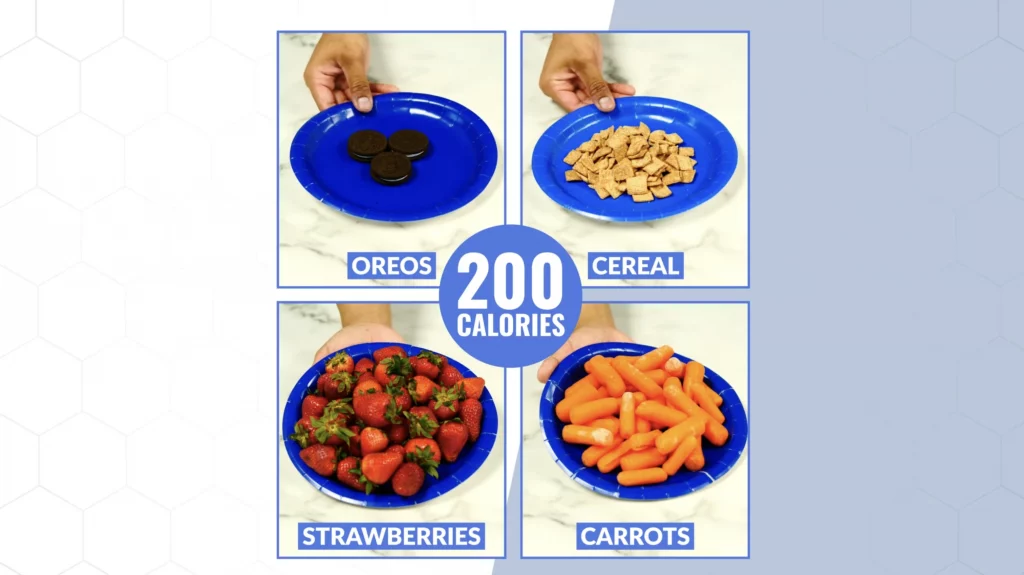
Not only that, but since low-calorie density foods tend to be unprocessed, they also tend to require more calories to burn and digest than more processed foods.
As for how much of a difference this can make for fat loss, a recent 2019 paper took 20 adults and first ran them through a diet consisting of only high-calorie density, processed foods for 2 weeks.
Afterward, they switched them to a diet of low-calorie density, unprocessed foods for 2 weeks. In both conditions, they were allowed to eat as much food as they wanted. The result?
The processed foods diet led to almost 2 lbs of weight gain (1.65 lbs). Once they switched to the unprocessed diet, however, their daily calorie intake dropped by over 500 calories, and they ended up losing over 2lbs.
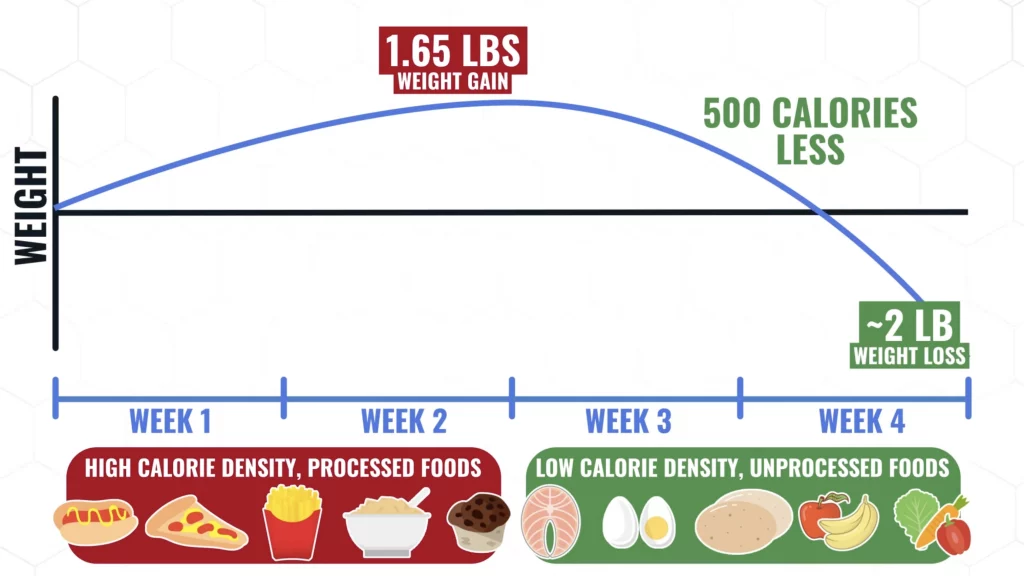
At the end of this belly fat diet stage, I’ll provide a list of low-calorie-density food items for you to pick from.
Factor 2: Protein — Eat More Of It
But before that, there is one more factor you need to pay attention to during stage 1 of the belly fat diet plan.
Although eating fewer calories than your body needs will help you lose weight, you want as much of that weight loss to be from fat rather than muscle. This is where protein comes in. You need to start eating more of it.
In fact, in studies where subjects go on the same diet and lose the same amount of weight, the ones who eat more protein end up losing more fat and less muscle.
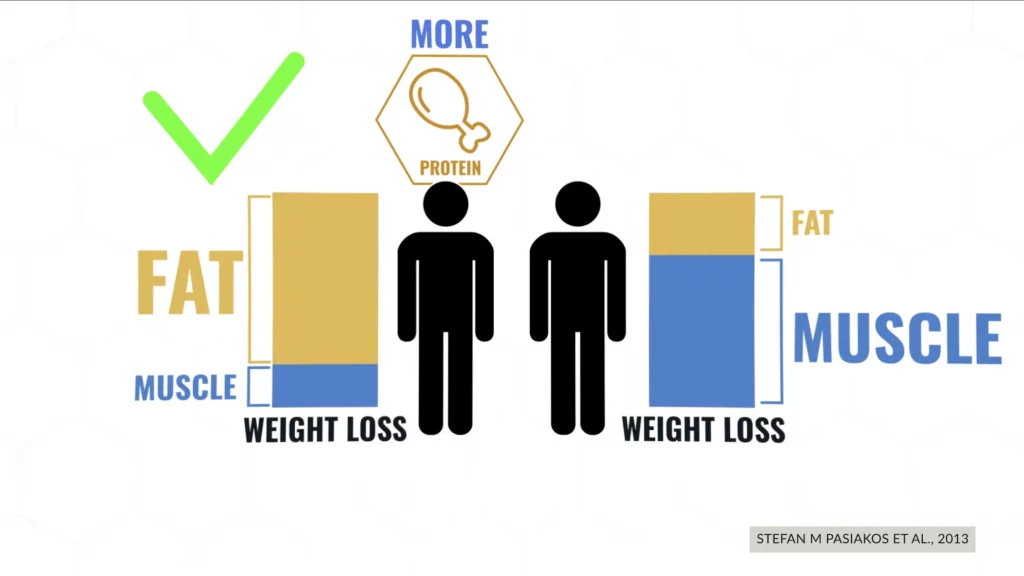
As for how much protein you should aim for, a good recommendation for relatively heavier males in this stage who are at a higher body fat is to eat 1g/cm of your height.
So if you’re 175cm tall, aim to eat around 175g of protein per day, with the rest of your calories coming from carbs and fats. Whereas if you’re a relatively lighter individual or closer to 15% body fat, you’ll want to multiply your body weight by 0.8 and, at a minimum, eat that many grams of protein per day.
Now, this might sound like a lot, but as you’ll see, it’s pretty easy to do if you choose the right protein sources.
Foods You'll Want To Focus On At This Stage
So to apply this all, take a look at these lists.
Here’s a list of some low-calorie-density, unprocessed foods. And here’s a list of protein sources ordered from highest to lowest in terms of how much protein they contain relative to their calories.
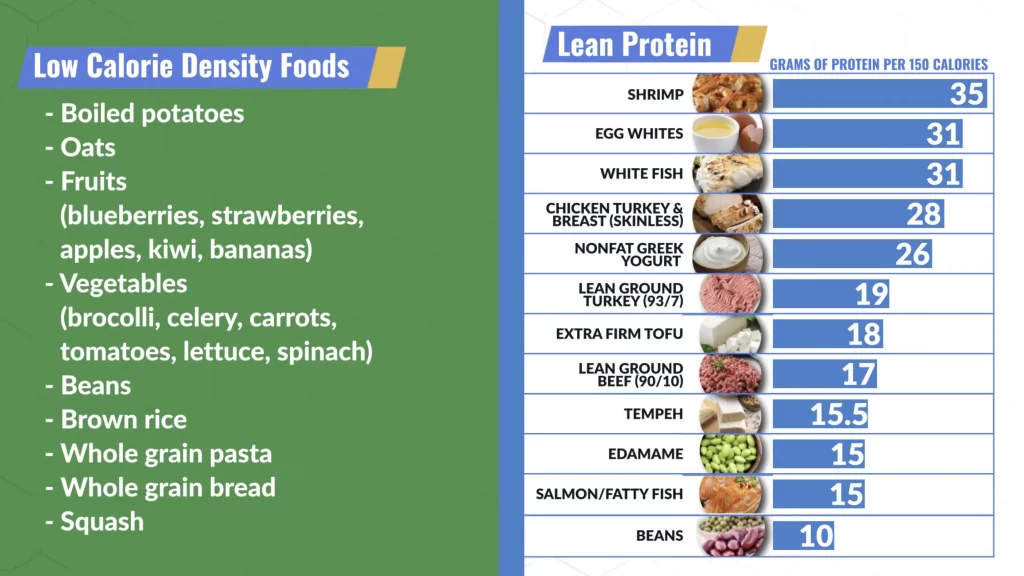
By the way: if you're interested in learning why certain protein sources are better than others, you'll want to check out this article:
What Are The BEST Sources of Protein to Build Muscle? (11 Studies)
Use these lists to build your meals throughout the day, and try to have one lean protein source and at least one serving of fruits and/or veggies in each of your meals for your belly fat diet. For example, instead of a muffin for breakfast, have some egg whites with blueberries and oatmeal.
Struggling to hit your protein intake? Consider protein shakes — here's how to use them:
Protein Powder: How to Best Use It For Muscle Growth (15 Studies)
You definitely can still have processed foods now and then, but be mindful of your serving sizes and enjoy them in moderation.
Focus only on calories and protein every day. If you’re consistent with the first stage of the belly fat diet strategy, you'll be able to get your body fat all the way down to 15%. But at this point is when you’ll likely need to refine your approach to continue getting results.
Belly Fat Diet Stage 1 (15% → 12% Body Fat)
This is where Stage 2 of the belly fat diet strategy comes in, which involves going from 15% to 12% body fat. By this point you’ll be hungrier, your fat loss will have slowed down, and you’ll be at a slightly greater risk of muscle loss. As a result, this is where most people get stuck.
There are two things that will help you overcome this.
#1: Track Your Calories (Even If Temporarily)
First, you need to get more precise with your approach from stage 1 of the belly fat diet plan.
As your body loses more and more fat, your metabolism will decrease, and you’ll start burning fewer calories per day. This is your body’s way of protecting its remaining fat stores.
This means the energy deficit you used to get down to 15% body fat may no longer be enough to get you down to 12% body fat.
To overcome this, if you haven't yet been doing so, you should start tracking your daily calorie intake more carefully. Especially at this stage of the belly fat diet plan. You might not think this is necessary, but research has shown the average person will think they eat about 429 less calories per day than they actually do.
To be honest, it's one of the most common mistakes people make when trying to lose fat.
So even if just temporarily, measure out your food to see how many calories you’re actually consuming and ensure you’re in an energy deficit.
Before that: if you're looking for a training program that'll help you set up every single one of your workouts for optimal muscle growth, I've got just the thing for you. Every BWS program is designed to be an all-in-one, science-based process that’ll get you to your dream physique FAST. And best of all? It's all rooted in science. For more information:
Click the button below to take my analysis quiz to discover the best program for you:
↓
#2: Lower Your Fat Intake While Adding Carbs To Your Diet
Second, this belly fat diet stage is when you’ll want to start addressing your carb and fat intake.
Take a look at this list of carbs and fats.
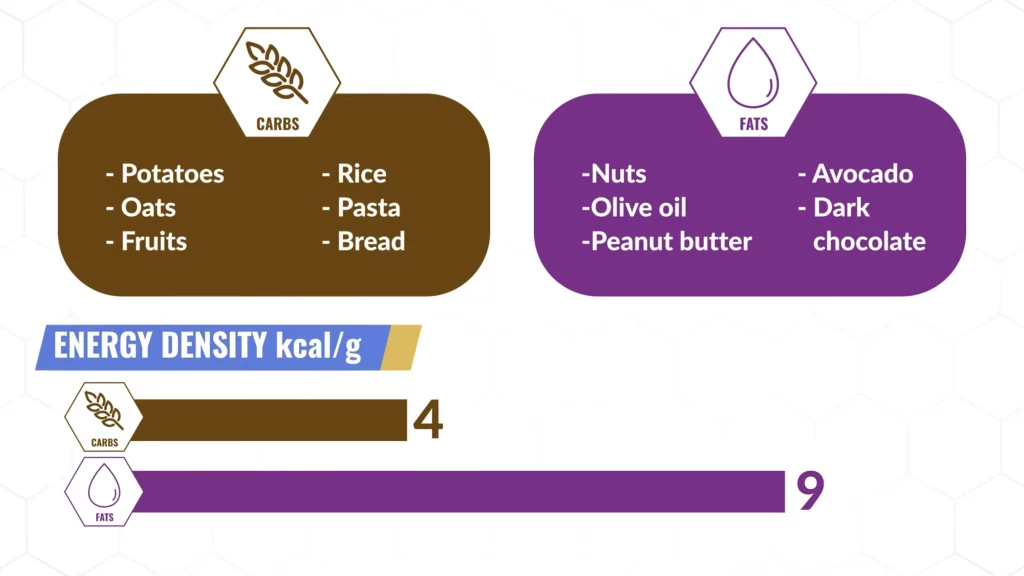
Although healthy fats are needed in your diet, on a gram-per-gram basis, fats contain more than twice as many calories as carbs do.
Because of this, an effective approach is to keep your protein intake high as is but lower your daily fat intake to the lower end of what’s recommended for general health. This is about 20-25% of your daily calorie intake.
As a result, you’ll now have room to introduce more carbs into your diet. These extra carbs can not only help you better manage your hunger levels, but they’ll also provide you with a boost in energy to support your daily activities and performance in the gym. Helping you burn more calories and better maintain your muscle mass.
Make these two tweaks as called for in the second stage of the belly fat diet strategy, and if you’re consistent, you’ll be able to get down to around 12% body fat. This is where stage 3 comes in.
Belly Fat Diet Stage 3 (12% → 10% Body Fat)
This is the most difficult stage of the belly fat diet plan.
While consistency with what we mentioned earlier will be the key to progressing through this stage, it will require more discipline.
First off, not only will you very likely have to be accurately tracking your calories every day, you’ll also want to ensure your daily meals are making the best use of the limited calories you have. At this point, your hunger levels will be the highest they’ve been.
So most of your meals throughout the day need to come from high-volume foods that will help you stay full for fewer calories. I have a past article that shows the most effective high volume food swaps to make, so check that out.
This also means that you’ll need to be more disciplined when it comes to social events and dining out.
You don’t have to eliminate it completely, but you will have to make wise choices when you’re out and make sure that you plan in advance for big meals out or for alcohol. Both of which can drastically increase your calorie intake without you even realizing it.
Is Going Through This Last Stage Of The Belly Fat Diet Plan Worth It For You?
Lastly, ask yourself if the sacrifices you'll have to make at this last stage of the belly fat diet strategy are worth it for you.
In my opinion, for most natural lifters, having a body fat of around 12-15% is the most sustainable physique because:
- It's practical to maintain
- You get the health benefits of getting leaner
- You'll still look great (especially if you have a good amount of muscle and well-developed abs)
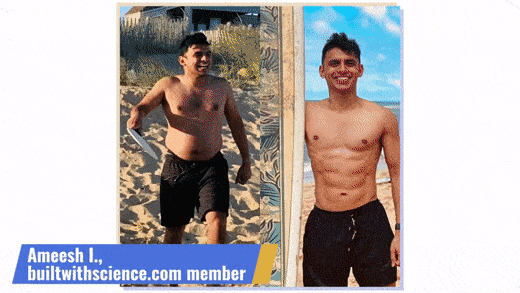
While getting leaner than this will provide a bit more definition and cuts, it not only requires a lot more sacrifice but for many people, that’s when daily energy levels and strength will start to be negatively affected.
And, unlike our Built With Science member Patrick over here, who started off with a good amount of muscle, you might not end up liking the way you look being really lean if you haven’t yet built up much muscle.
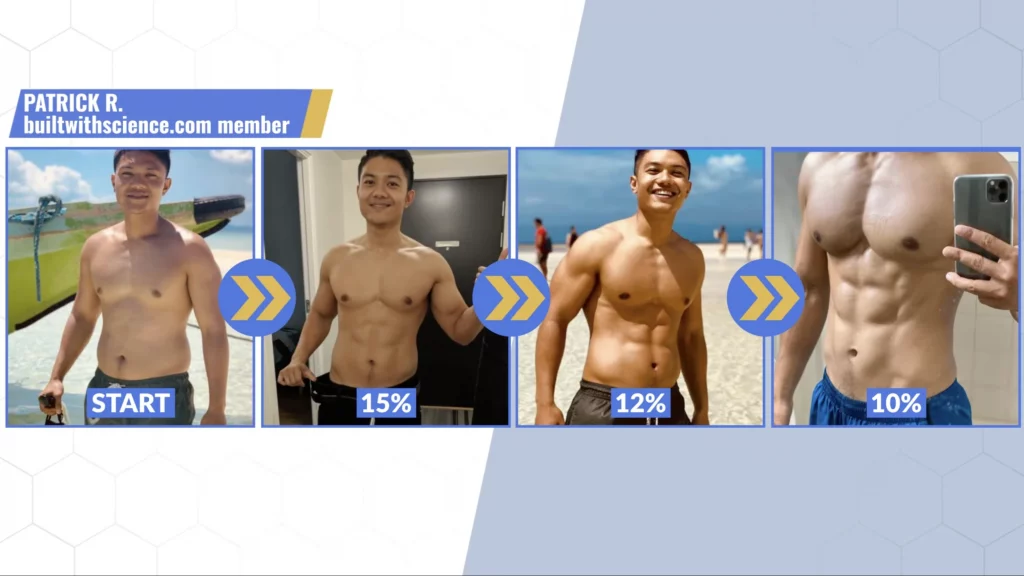
So while you definitely can get to 10% body fat by pushing through with the last stage of the belly fat diet strategy, at least consider hanging around at a higher level of body fat first.
Be proud of how far you’ve come. And, importantly, realize that the extra push just may not be worth it, especially if you can’t maintain it.
Takeaway
Overall, guys, the strategy when it comes to your nutrition is actually quite simple.
The hard part of the belly fat diet strategy is staying consistent with it. You have to be clear about your goals and then find what you personally enjoy and can stick to consistently.
And if you’re looking for step-by-step guidance with setting up your nutrition plan and finding foods and meals that you actually look forward to eating every day, just head on over to builtwithscience.com and take my analysis quiz to discover the best approach for you and your body.
And if you’re looking for step-by-step guidance with setting up your nutrition plan and finding foods and meals that you actually look forward to eating every day, just take my analysis quiz to discover the best approach for you and your body below:
Click the button below to take my analysis quiz to discover the best program for you:
↓
I’d also highly suggest you give:
- This article a read next for an exercise to help you speed up the fat loss process OR
- This one a read for some quick and easy fat loss food swaps you can make into your diet right away


